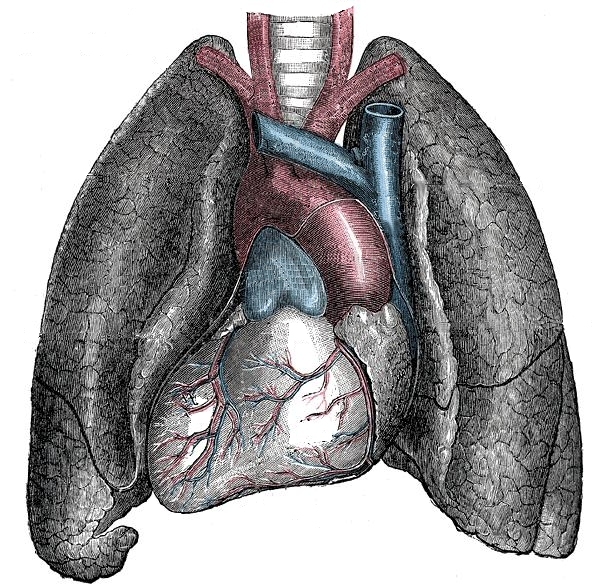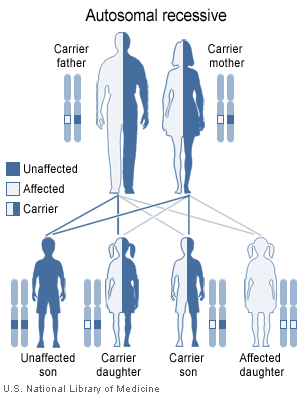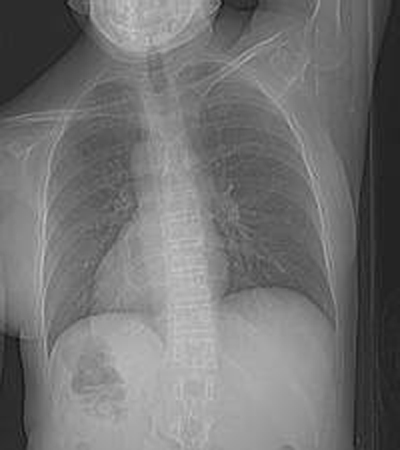Situs inversus
| Situs inversus | |
 | |
|---|---|
| Situs inversus; heart and stomach on the right; vena cava and liver on the left | |
| ICD-10 | Q89.3 |
| ICD-9 | 759.3 |
| OMIM | 270100 |
| DiseasesDB | 29885 |
| eMedicine | radio/639 |
| MeSH | D012857 |
|
WikiDoc Resources for Situs inversus |
|
Articles |
|---|
|
Most recent articles on Situs inversus Most cited articles on Situs inversus |
|
Media |
|
Powerpoint slides on Situs inversus |
|
Evidence Based Medicine |
|
Clinical Trials |
|
Ongoing Trials on Situs inversus at Clinical Trials.gov Trial results on Situs inversus Clinical Trials on Situs inversus at Google
|
|
Guidelines / Policies / Govt |
|
US National Guidelines Clearinghouse on Situs inversus NICE Guidance on Situs inversus
|
|
Books |
|
News |
|
Commentary |
|
Definitions |
|
Patient Resources / Community |
|
Patient resources on Situs inversus Discussion groups on Situs inversus Patient Handouts on Situs inversus Directions to Hospitals Treating Situs inversus Risk calculators and risk factors for Situs inversus
|
|
Healthcare Provider Resources |
|
Causes & Risk Factors for Situs inversus |
|
Continuing Medical Education (CME) |
|
International |
|
|
|
Business |
|
Experimental / Informatics |
Editor-In-Chief: C. Michael Gibson, M.S., M.D. [1]
Overview
Situs inversus (also called situs transversus) is a rare congenital condition in which the major visceral organs are reversed or mirrored from their normal positions. The normal arrangement is known as situs solitus. In other rare cases, in a condition known as situs ambiguus or heterotaxy, situs cannot be determined.
The term situs inversus is a short form of the Latin phrase "situs inversus viscerum," meaning "inverted position of the internal organs." Dextrocardia (the heart being located on the right side of the thorax) was first recognised by Marco Severino in 1643. However, situs inversus was first described more than a century later by Matthew Baillie.
The prevalence of situs inversus varies among different populations but is less than 1 in 10,000 people.[1]
Anatomy

The condition affects all major structures within the thorax and abdomen. Generally, the organs are simply transposed through the sagittal plane.
The heart is located on the right side of the thorax, the stomach and spleen on the right side of the abdomen and the liver and gall bladder on the left side.
The left lung is trilobed and the right lung bilobed, and blood vessels, nerves, lymphatics and the intestines are also transposed.
If the heart is swapped to the right side of the thorax, it is known as situs inversus with dextrocardia or situs inversus totalis.
If the heart remains in the normal left side of the thorax, a much rarer condition (1 in 22,000 cases of situs inversus), it is known as situs inversus with levocardia or situs inversus incompletus.
Situs inversus with levocardia, or dextrocardia without situs inversus, present much higher rates of congenital defects than situs inversus with dextrocardia.
Significance
Situs inversus is generally an autosomal recessive genetic condition, although it can be X-linked or found in identical "mirror" twins.[2]
In the absence of congenital heart defects, individuals with situs inversus are phenotypically unimpaired, and can lead normal healthy lives, without any complications related to their medical condition.
There is a 5-10% prevalence of congenital heart disease in individuals with situs inversus totalis, most commonly transposition of the great vessels. The incidence of congenital heart disease is 95% in situs inversus with levocardia.
Many people with situs inversus are unaware of their unusual anatomy until they seek medical attention for an unrelated condition. The reversal of the organs may then lead to some confusion, as many signs and symptoms will be on the 'wrong' side.
For example, if an individual with situs inversus develops appendicitis, they will present to the physician with left lower abdominal pain, since that is where their appendix lies. Thus, in the event of a medical problem, the knowledge that the individual has situs inversus can expedite diagnosis. People with this rare condition should inform their physicians before an examination, so they may redirect their search for heart sounds and other signs.
Situs inversus also complicates organ transplantation operations as donor organs will almost certainly come from situs solitus donors. As hearts and livers are chiral, geometric problems arise placing an organ into a cavity shaped in the mirror image.
For example, a person with situs inversus who requires a heart transplant needs all the vessels to the transplant donor heart reattached to their existing ones. However, the orientation of these vessels in a person with situs inversus is reversed, necessitating steps so that the blood vessels join properly.
Kartagener syndrome

About 25% of individuals with situs inversus have an underlying condition known as primary ciliary dyskinesia (PCD).
PCD is a dysfunction of the cilia that manifests itself during the embryologic phase of development.
Normally-functioning cilia determine the position of the internal organs during early embryological development, and so individuals with PCD have a 50% chance of developing situs inversus.
If they do, they are said to have Kartagener syndrome, characterized by the triad of situs inversus, chronic sinusitis, and bronchiectasis.
Cilia are also responsible for clearing mucus from the lung, and the dysfunction causes increased susceptibility to lung infections.
Male sufferers of PCD are often infertile: the cilia that make up the tail of individual sperm cells are also defective, thus rendering the sperm ineffective.
Diagnosis
Chest x ray
CT
 Image Courtesy of Radiopaedia and Copylefted. |
See also
Notes
- ↑ Situs inversus on eMedicine
- ↑ [Gedda L, Sciacca A, Brenci G, Villatico S, Bonanni G, Gueli N, Talone C. Situs viscerum specularis in monozygotic twins. Acta Genet Med Gemellol (Roma) 1984; 33(1): 81-5.]
References
- McManus, Chris (2002). Right Hand, Left Hand. Harvard University Press. ISBN 0-674-00953-3. this book was the 2003 Aventis winner and has a description of the history behind the discovery of this medical condition.
- Yokoyama T, Copeland NG, Jenkins NA, Montgomery CA, Elder FF, Overbeek PA (1993). "Reversal of left-right asymmetry: a situs inversus mutation". Science. 260 (5108): 679–82. doi:10.1126/science.8480178. PMID 8480178.
- Lowe LA, Supp DM, Sampath K; et al. (1996). "Conserved left-right asymmetry of nodal expression and alterations in murine situs inversus". Nature. 381 (6578): 158–61. doi:10.1038/381158a0. PMID 8610013.
- Levin M (1997). "Left-right asymmetry in vertebrate embryogenesis". Bioessays. 19 (4): 287–96. doi:10.1002/bies.950190406. PMID 9136626.
- Levin M, Pagan S, Roberts DJ, Cooke J, Kuehn MR, Tabin CJ (1997). "Left/right patterning signals and the independent regulation of different aspects of situs in the chick embryo". Dev. Biol. 189 (1): 57–67. doi:10.1006/dbio.1997.8662. PMID 9281337.
- Logan M, Pagán-Westphal SM, Smith DM, Paganessi L, Tabin CJ (1998). "The transcription factor Pitx2 mediates situs-specific morphogenesis in response to left-right asymmetric signals". Cell. 94 (3): 307–17. doi:10.1016/S0092-8674(00)81474-9. PMID 9708733.
- Stern CD, Wolpert L (2002). "Left-right asymmetry: all hands to the pump". Curr. Biol. 12 (23): R802–3. doi:10.1016/S0960-9822(02)01312-X. PMID 12477404.
External links
Template:Phakomatoses and other congenital malformations not elsewhere classified
